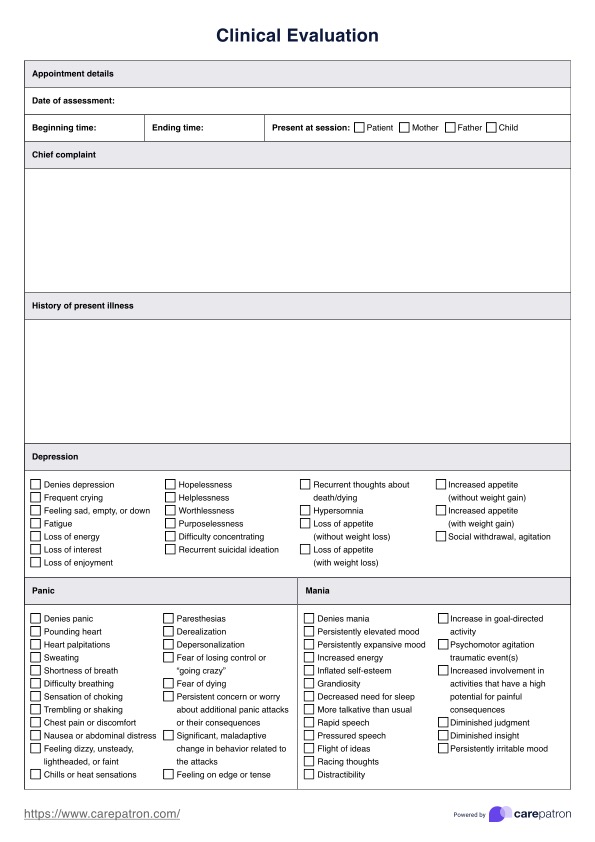A clinical investigation is a research study where a product or service, like a medical device or medication, is directly tested on people to assess its safety and performance. Think of it as a real-world experiment. This can then result in clinical studies that might be needed for regulatory requirements or to provide evidence for its clinical benefits. A clinical evaluation, in the context of clinical psychology, gathers existing information to assess a client's state to determine a diagnosis, if any, and determine a treatment plan after.

Clinical Evaluation
Explore the process of conducting clinical evaluations and its importance in the therapeutic process. Access a free Clinical Evaluation template to help you get started.
Clinical Evaluation Template
Commonly asked questions
A qualified mental health professional, such as a licensed therapist or psychiatrist, should conduct the clinical evaluation. They have the training and experience to gather and interpret the necessary information.
The clinical evaluation is crucial as it helps accurately diagnose mental health conditions. It also allows for the development of a personalized treatment plan tailored to the client's specific needs. Furthermore, a deeper clinical study fosters clear communication and collaboration between therapist and client. This also establishes a baseline for tracking progress over time.
EHR and practice management software
Get started for free
*No credit card required
Free
$0/usd
Unlimited clients
Telehealth
1GB of storage
Client portal text
Automated billing and online payments











